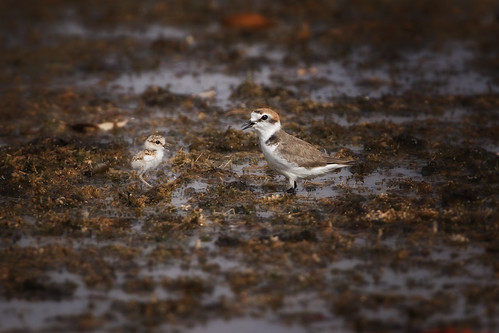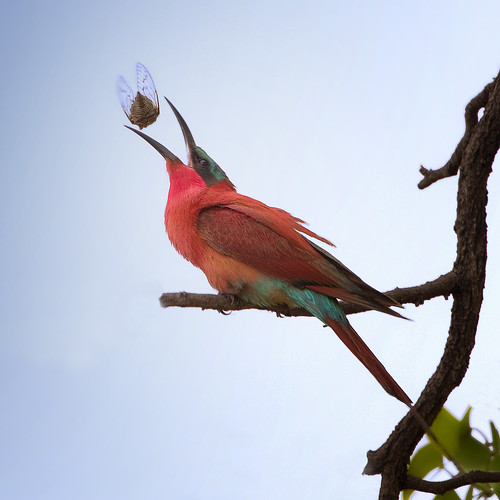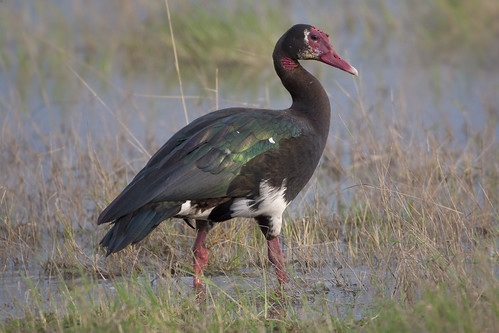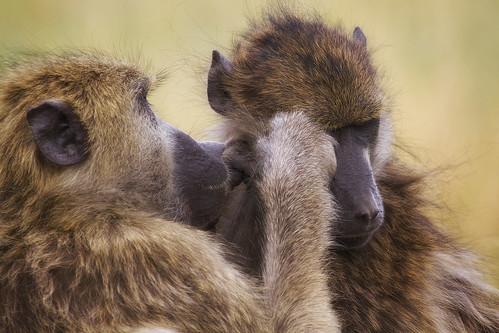
Mirror? no wait! by Tarique Sani

Mirror? no wait! by Tarique Sani

The Kentish Plover, Charadrius alexandrinus, is a small wader in the plover bird family. Despite its name, this species no longer breeds in Kent, or even Great Britain. It breeds in a wide range, from southern Europe to Japan and in Ecuador, Peru, Chile, the southern United States and the Caribbean.
The North American Committee of the American Ornithologists’ Union and the IOC World Bird List have voted on or before July 2011 to split the American forms into a new species Snowy Plover, however, no other committee has voted to change taxonomy yet. In that light, the American forms can now be found under a separate species listing Snowy Plover,[2]however all forms can still be found here until further actions are taken.

The Southern Carmine Bee-eater (Merops nubicoides) (formerly Carmine Bee-eater) occurs across sub-equatorial Africa, ranging from KwaZulu-Natal and Namibia to Gabon, eastern Democratic Republic of the Congo and Kenya.
This species, like other bee-eaters, is a richly coloured,striking bird, predominantly carmine in colouration, but with the crown and undertail coverts blue.
Ref: https://en.wikipedia.org/wiki/Southern_Carmine_Bee-eater

The Spur-winged Goose (Plectropterus gambensis) is a large bird in the family Anatidae, related to the geese and the shelducks, but distinct from both of these in a number of anatomical features, and therefore treated in its own subfamily, the Plectropterinae. It occurs in wetlands throughout sub-Saharan Africa.

There are six recognized subspecies of Black Francolin:
F. f. francolinus (Linnaeus, 1766) – Western Black Francolin – Cyprus, southern Turkey to Iraq and Iran
F. f. arabistanicus (Zarudny and Harms, 1913) – Iranian Black Francolin – southern Iraq and western Iran
F. f. asiae (Bonaparte, 1856) – Indian Black Francolin – northern India
F. f. henrici (Bonaparte, 1856) – South Persian Black Francolin – southern Pakistan to western India
F. f. bogdanovi (Zarudny, 1906) – southern Iran and Afghanistan to southern Pakistan
F. f. melanonotus (Hume, 1888) – eastern India to Sikkim and Bangladesh.

Chacmas usually live in social groups composed of multiple adult males, adult females, and their offspring. Occasionally, however, very small groups form that include only a single adult male and several adult females. Chacma troops are characterized by a dominance hierarchy. Female ranking within the troop is inherited through the mother and remains quite fixed, while male ranking is often in flux, especially when the dominant male is . Chacmas are unusual among baboons in that neither males nor females form strong relationships with members of the same sex. Instead, the strongest social bonds are often between unrelated adult males and females. Infanticide is also common compared to other baboons species, as newly dominant males will often attempt to kill young baboons sired by the previously dominant male. Baboon troops possess a complex group behavior and communicate by means of body attitudes, facial expressions, vocalisations and touch.